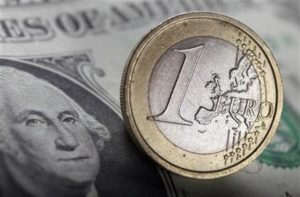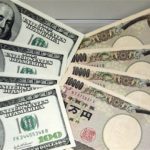 The euro declined against the US dollar on Wednesday, after an ECB Executive Board member said in an interview that the central bank was seriously considering negative deposit rates.
The euro declined against the US dollar on Wednesday, after an ECB Executive Board member said in an interview that the central bank was seriously considering negative deposit rates.
EUR/USD reached a session low at 1.3564 at 12:35 GMT, after which consolidation followed at 1.3574, losing 0.47% for the day. Support was likely to be received at February 7th low, 1.3553, while resistance was to be encountered at February 11th high, 1.3683.
The euro came under heavy selling pressure, following the comments of the ECB Executive Board member, Benoit Coure that the central banks policy makers were considering charging banks to deposit spare cash overnight with it. He also added that the ECB does not expect deflation in the euro zone, but a gradual increase to the inflation target of below-but-close-to 2%.
“That is something we are considering very seriously. But you should not expect too much of it,” said Coeure, referring to a negative deposit rate, cited by Thomson Reuters.
The 18-nation common currency was further pressured after Eurostat reported today that euro zone industrial output declined 0.7% in December, trailing analysts projections of a 0.3% drop and after a downward revised 1.6% increase in the previous month. On year-over-year basis, industrial production in the euro area slowed to an annualized 0.5% gain, well below expectations for a 1.8% advance and after a downward revised annualized growth of 2.8% in the preceding month.
The drop in production was mainly driven by a 2.1% slump in production of energy and capital goods, as well as 0.1% decline in output of non-durable goods in December from a month ago.
European Central Bank President Mario Draghi left policy on hold last week and reiterated the forward guidance of the central bank, saying rates will be kept at their current record-low levels, or even weaker, for a prolonged period of time.
He tries to guide the euro zone through fragile economic recovery as inflation remains at the lowest since 2009. For now, interventions are postponed at least March, when the central bank is going to publish its quarterly macro-economic forecasts, which will provide first inflation prediction for 2016. Previous forecasts have revealed that the ECB should take more decisive steps and should further ease its monetary policy.
Inflation in the euro area sharply declined to an annualized pace of 0.7% in January, the weakest level in four years and after a 0.8% increase in the previous month. Analysts had estimated that consumer prices will increase by 0.9% in January. This was a fourth straight reading of inflation under 1%, which was referred to by ECB President Mario Draghi as a danger zone. The central bank attempts to maintain inflation at just below 2%, which added to concerns over the threat of deflation in the region.
Inflation in Germany, the largest economy in the euro bloc, unexpectedly remained steady at 1.2% in January, defying analysts projections of an increase to 1.3%. This data came as another evidence of weak price pressure in the 18-nation common currency area.
Draghi is expected to take a statement at a conference in Brussels later today. The conference is scheduled to start at 15:30 GMT.
Meanwhile, greenback’s demand was pressured following the new Federal Reserve Chairman Janet Yellen’s remarks that suggested monetary policy is likely to remain loose for a prolonged period of time.
Janet Yellen told yesterday the Republican-controlled House Financial Services Committee, the Fed will “likely reduce the pace of asset purchases in further measured steps at future meetings”, if the labor market continues to recover and inflation rises.
She underscored “continuity” in the Federal reserve monetary policy, emphasizing that she strongly approves the approach of her predecessor, Ben Bernanke.
The current monthly bond-buying program was started in September 2012 and since then the US jobless rate has declined 1.5% to reach a 5-year low at 6.6% in January. However, according to Yellen the rate remains “well above levels” the central bank regards as consistent with maximum sustainable employment.
The Fed Chairman also reiterated that the pace of cutting back Fed stimulus was not on a “preset course”, and added the central bank planned to keep interest rates at zero “well past” the time the jobless rate falls below 6.5%.
“Very, very accommodative monetary policy in the U.S. is on the cards for a long time, even if the Fed does proceed with stimulus reduction of $10 billion a meeting as the market is expecting,” said Derek Mumford, a director at Rochford Capital, a currency risk-management company in Sydney, cited by Bloomberg. “In the very near term, the dollar against the majors could be quite weak.”
The central bank announced its decision to reduce monthly monetary stimulus by 10 billion USD to 65 billion USD at the meeting on policy in January, underscoring that labor market indicators, which “were mixed but on balance showed further improvement”, while nation’s economic growth has “picked up in recent quarters.” Fed policymakers are to hold their next meeting on March 18th-19th.
The Federal Reserve will probably continue to pare stimulus by $10 billion at each policy meeting before exiting the program in December, according to a Bloomberg News survey of 41 economists, conducted on January 10th.
Elsewhere, GBP/USD hit a two-week high at 1.6558 at 11:20 GMT, after which consolidation followed at 1.6519, adding 0.41% for the day. Support was likely to be received at February 11th low, 1.6393, while resistance was to be encountered at January 30th high, 1.6564.





